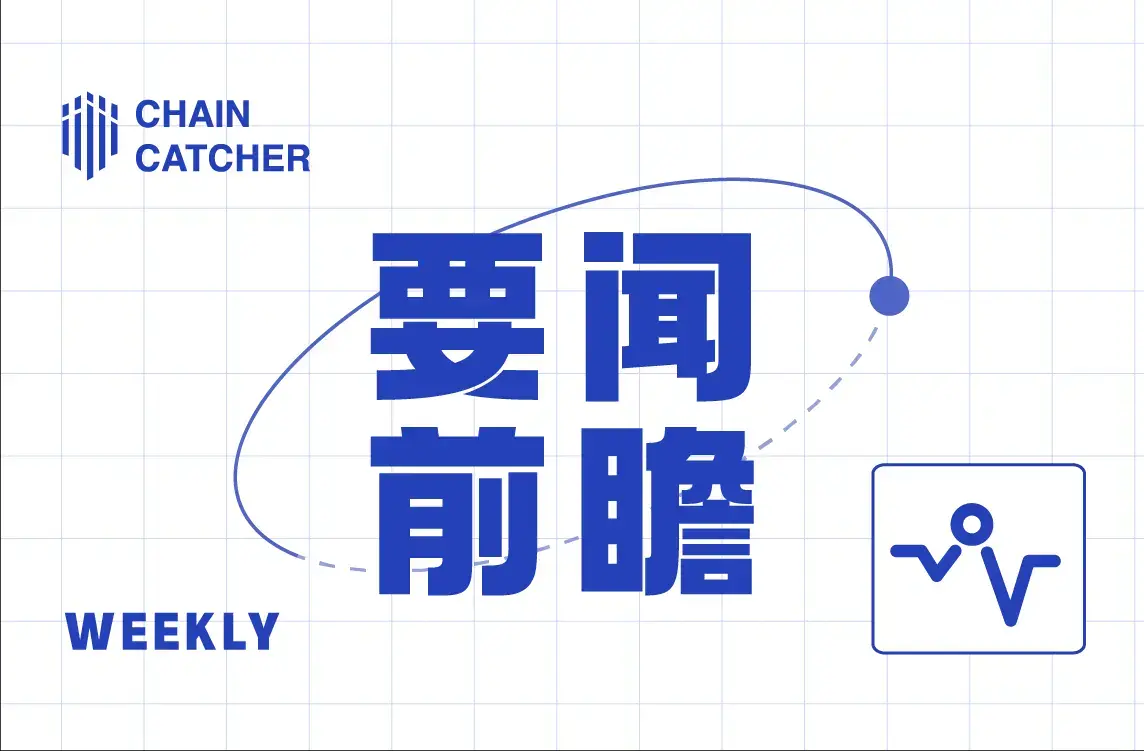Realms on StarkNet: A New Player in the Loot Ecosystem
Original Title: 《Realms X Bibliotheca Research》
Original Author: 0xTwss
Compiled by: Bella Research
Bibliotheca DAO is a decentralized autonomous organization active in the Lootverse, dedicated to creating an open-source on-chain multiplayer combinable game called Settling of the Realms (referred to as Settling) on StarkNet, attracting developers and players to combine various Loot derivative projects. $LORDS is the functional token of this project.
On August 27, 2021, Loot sparked a wave of text NFT frenzy in the cryptocurrency circle, with 8,000 NFTs being snapped up in just 4 hours. The simple 8 lines of text left a vast space for imagination for the community, and developers flocked to unleash their creativity in this new land. Since then, Lootverse has been thriving, with at least 100 Loot derivative projects to date.
Project Development History and Milestones
After the success of Loot, various imitation and derivative projects emerged, and Bibliotheca was one of them. They built a platform that graphically displays the Loot derivatives owned by users. Shortly after the platform went live, Bibliotheca collaborated with Realms and joined the construction of the Realms project.
To attract more users to participate in the project, economic incentives are always the most effective way. Taking advantage of the Loot craze, the project team established its own community. Loot holders can mint Realms for 0.03E, while others can mint for 0.1E. They then launched mining, where staking Realms can earn the token $LORDS and resources from the Realms ecosystem, which we will discuss later.
Initially, Realms was built on the Arbitrum testnet Rinkeby, but later migrated to Starknet, which has now been completed. As for the reason for the transfer to Starknet, the project team believes that a complete web3 on-chain world needs to be supported by three points: low fees, simple computation, and composability.
To meet these three points, currently, ZK Rollup is the only option; the gas fees on Arbitrum and the 7-day waiting period are not ideal solutions for us. It may become cheaper in the future, but it is still difficult to meet expectations now.
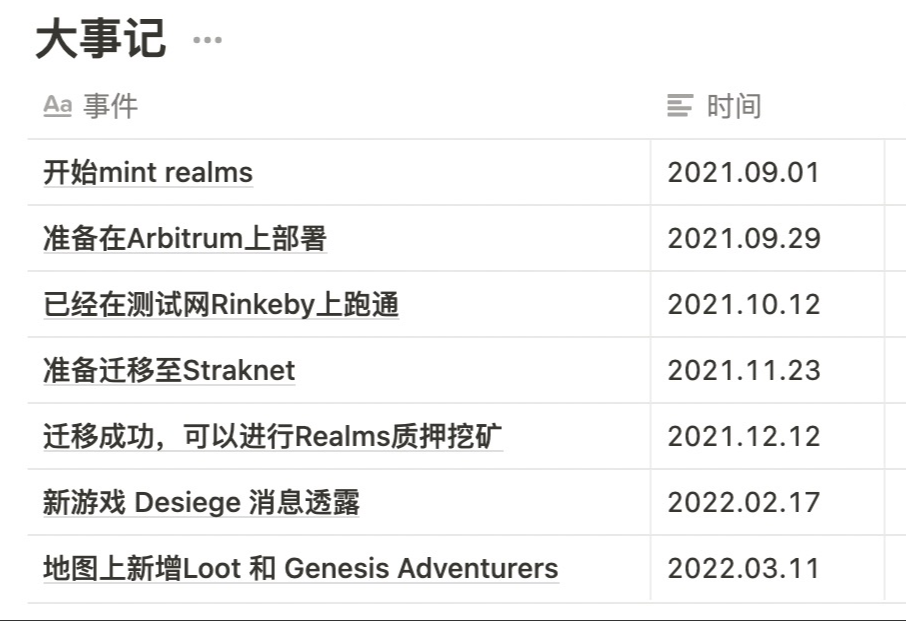
Bibliotheca DAO
Bibliotheca DAO aims to create a composable, economically driven, permissionless ecosystem that supports millions of builders and players to interact within this ecosystem.
Adventurers, land, scarce resources, equipment, and many other elements make up the current game ecosystem. However, in Bibliotheca's blueprint, they can integrate far more than these. They are committed to enabling more and more Loot derivative projects to interact within Realmverse. Similar to DnD, it is not just a game but a game system, striving to create a complete, complex, and dynamically balanced world.
On this map called Atlas, there are two types of land assets: Realms and Crypts and Caverns (dungeons, abbreviated as C&C). There are a total of 8,000 Realms, mainly distributed in the dark-colored areas on the edge of the map below; there are 9,000 C&C, mainly distributed in the light-colored inland area.
From the close-up view, the lookout tower icon represents Realms, and the skull icon represents C&C; besides Realms and C&C, we can also view the distribution of Loot, GA, Resource, and Order on the website (according to official news, Anima will also interact with Realms, but it has not been displayed yet).
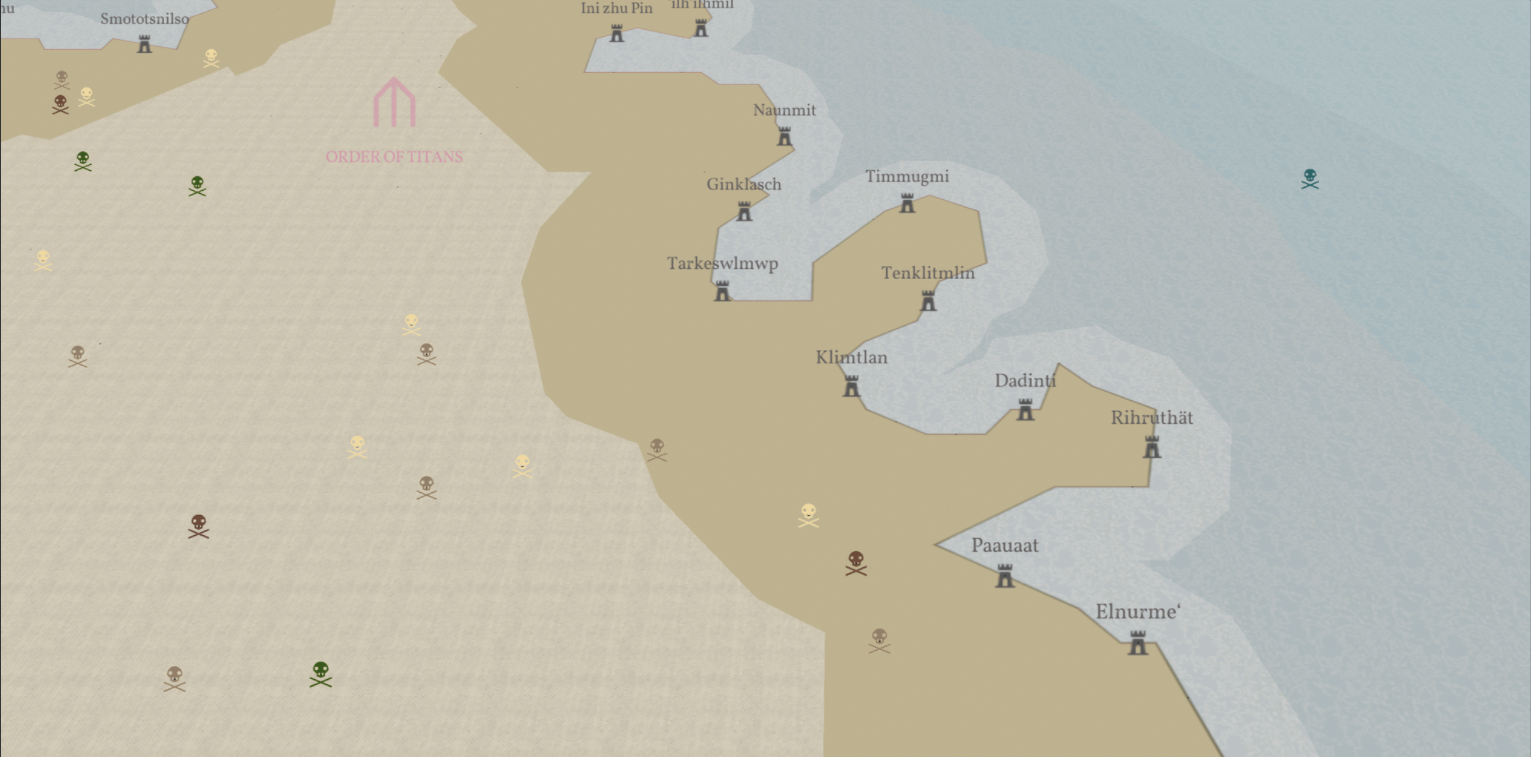
Close-up View
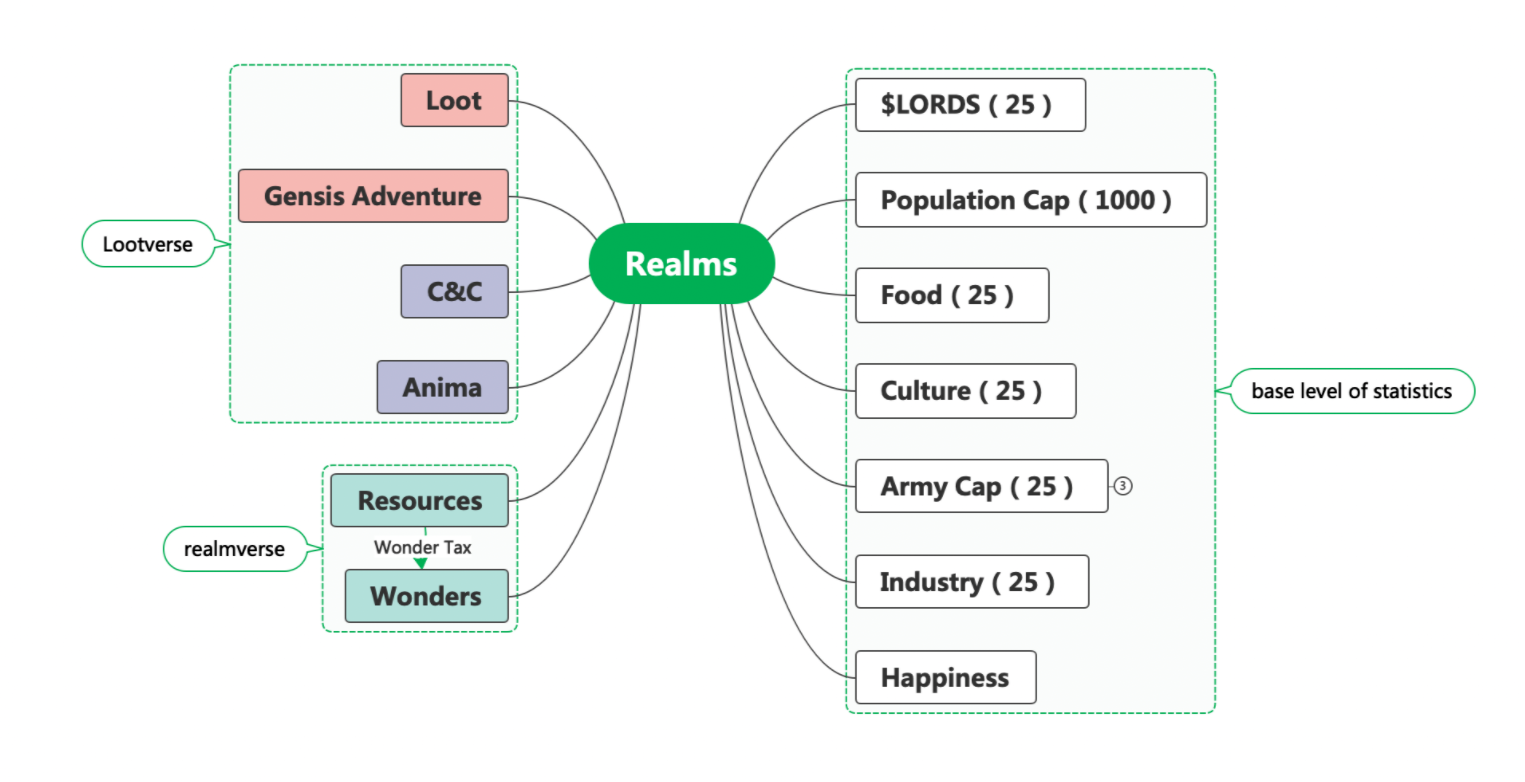
In the above mind map, the left side shows the cooperative projects of Realms and the assets within the Realms ecosystem, while the right side shows the initial resource allocation and quantity for each Realm. Next, we will introduce these projects.
Realms "Land"
Loot is the adventurer's equipment bag on unknown lands, and Realms are these lands. Similar to Loot, each piece of land in Realms has different rarity, including regions, cities, rivers, and ports, which can be queried on the official site. The lords on this land initiate wars, form alliances, and acquire resources through the on-chain raid and plunder game Settling.
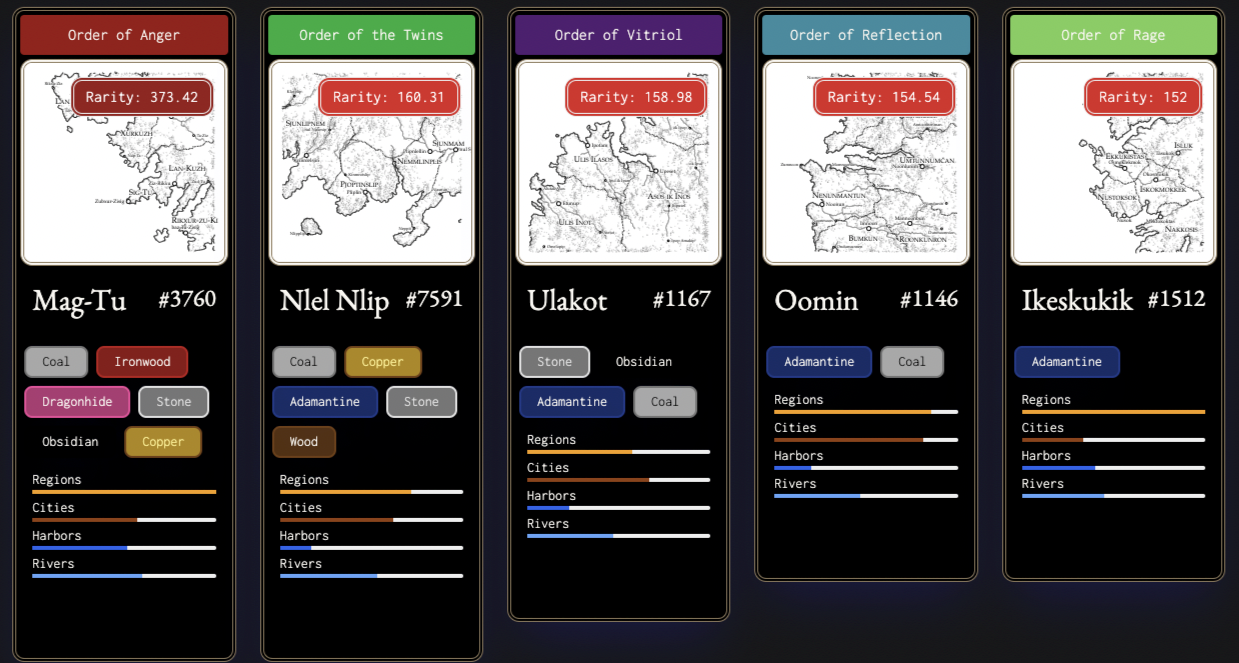
The Settling game is set up to be intricate and complex, where every action can affect the future development of alliances.
Each person can claim a character for free on Starknet. This character is an upgradable and combinable ERC721 token. You can also equip the character with Loot or Gensis Adventure gear, define its race and gender, and this information will be permanently recorded on-chain;
At the beginning of creation, each Realm is configured with certain basic resources, including $LORDS, food, culture, industry, military, and population, and your choices will directly impact resource productivity. Each piece of land will also produce 100 units of resources daily, with varying rarity (there are a total of 22 types, ranging from the relatively common "wood" to the extremely rare "dragon skin," each resource has its unique use).
Of these, 75% can be used immediately, while 25% will be stored in the treasury, and a portion must be paid as Wonder Tax for the maintenance of Wonders; Wonders are the most mysterious buildings in each domain, with only 50 in the world, and no one knows who built them.

Distribution of Dragon Skin
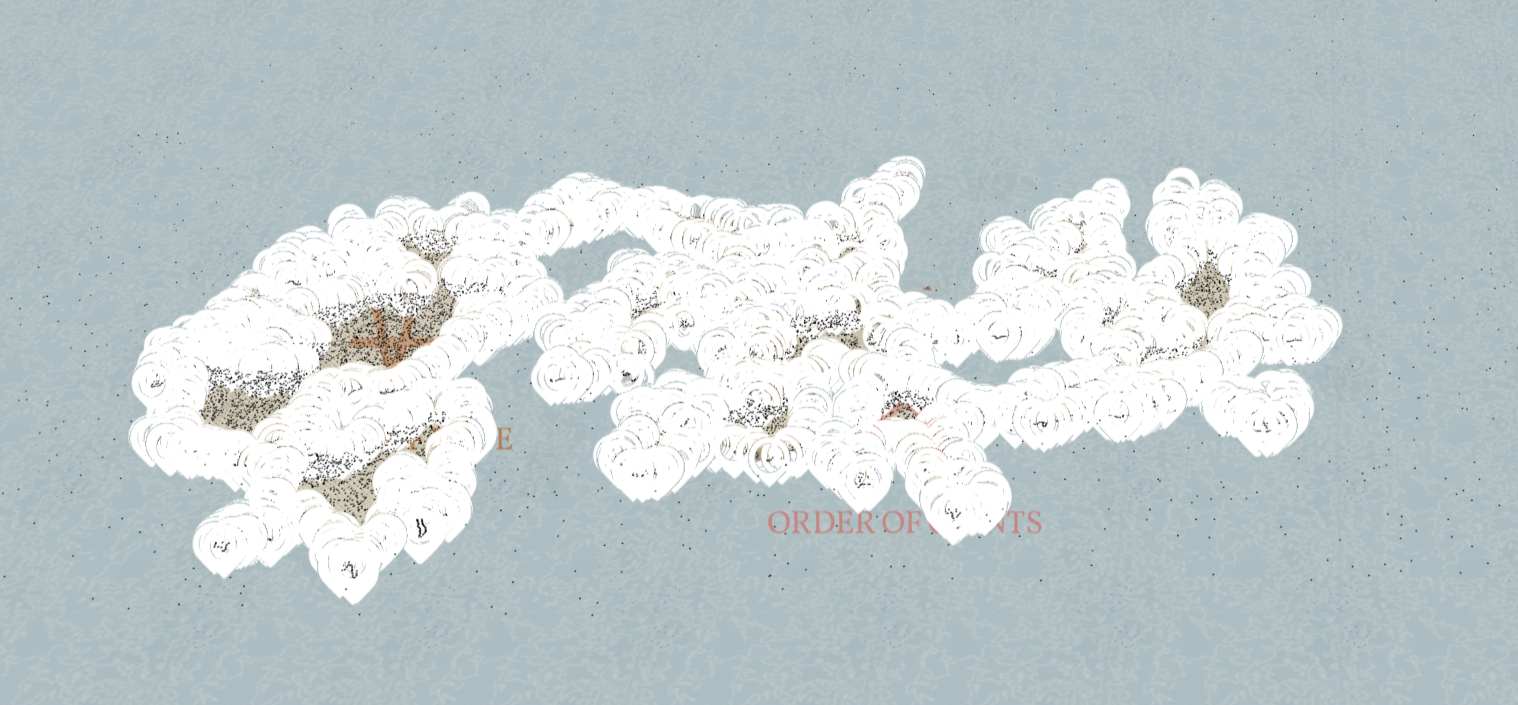
Distribution of Wood
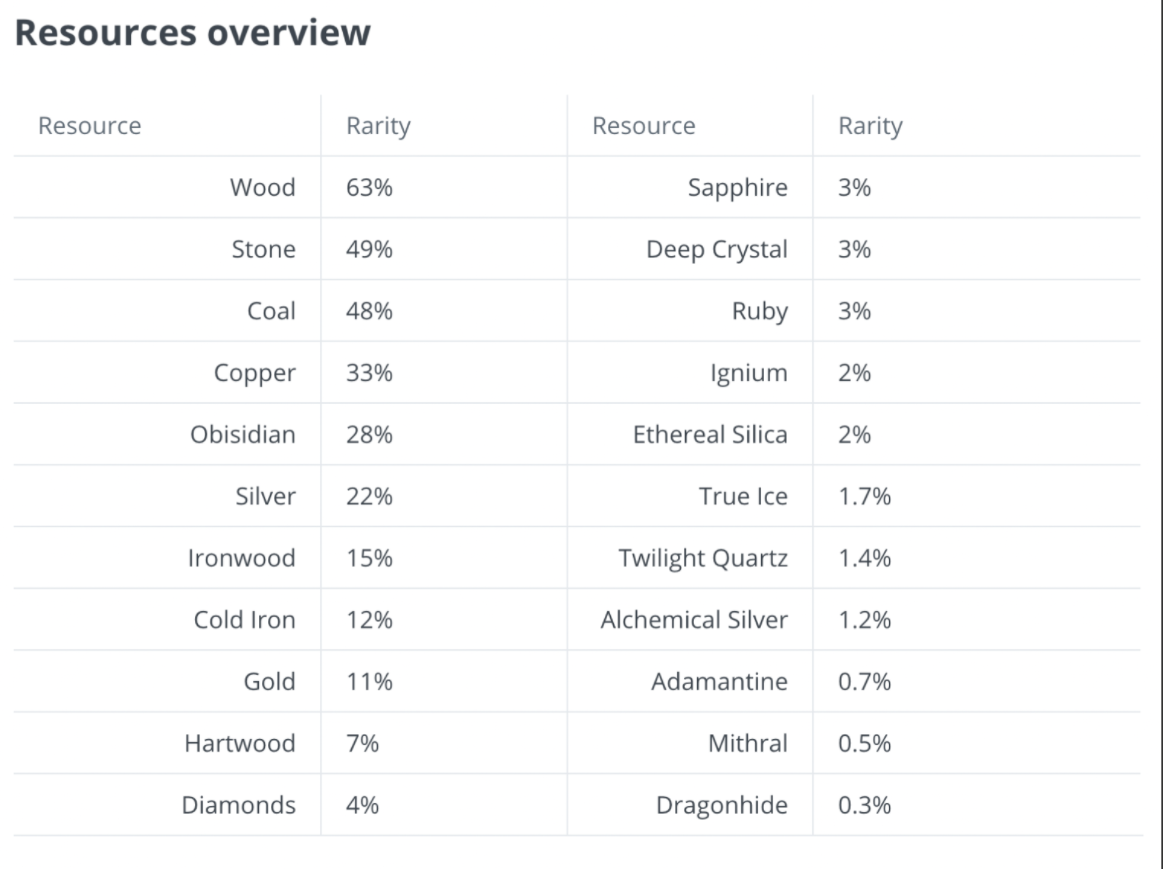
The entire Atlas has 16 Orders (see the image below), and tribes can gather armies to attack and plunder resources from each other. The victorious side can obtain 50% of the defeated side's treasury. To protect and expand their domains, lords can lead armies to attack other territories, with each army consisting of 25 warriors. Different skill values (agility, aggression, defense, vitality, intelligence) determine which team will win in battle.
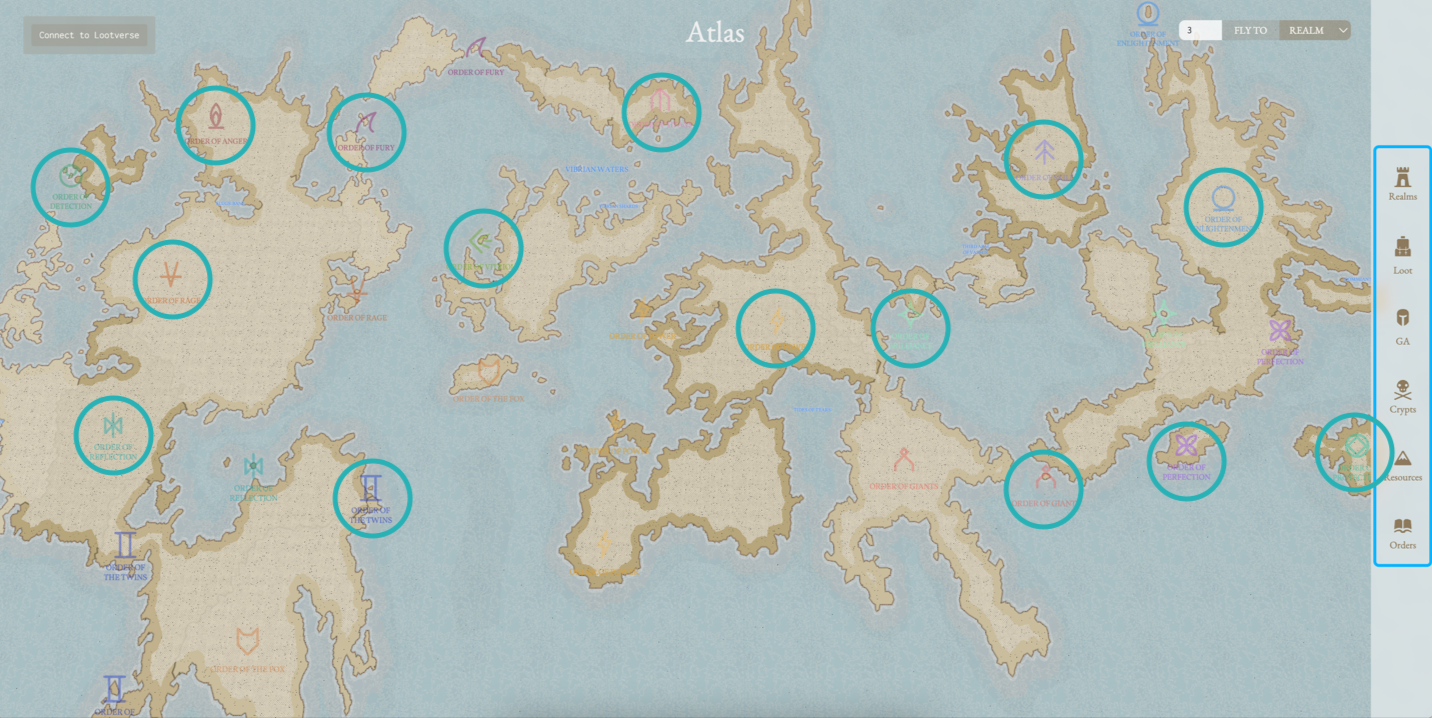
The above is the entire narrative of Realms. Next, let's look at its market and community performance.
As of March 20, 2022, Realms' floor price is 1.15e (Loot floor price: 1.5e).
As of March 20, 2022, the staking volume of Realms reached 7,148 (out of a total of 8,000).
As a Loot derivative, the floor price of Realms is already approaching that of OG Loot, and the staking rate is as high as 89%, indicating that the community highly recognizes its value, and there are many diamond hands, showing a long-term optimistic attitude towards it.
The Realms community is very active and willing to contribute to the project voluntarily. For example, many resource descriptions come from the community, and some members have used their imagination based on the different geographical features of Realms to enrich the narrative background of the map, making the entire ecosystem more colorful.
In addition, the new version of the tower defense mini-game Desiege is in progress. This is an on-chain PvP mini-game where dark forces and light forces battle over the territory of Realms. Both sides must hold $LORDS to participate, and each round lasts about 36 hours, with the winning side receiving rewards on Starknet.

Realms has introduced the concept of a map, C&C has added game dungeons, Gensis Adventure provides character figures, and Anima represents spell skills. Next, we will introduce a few other projects.
C&C "Dungeons"
Crypts and Caverns is created by one of the main members of Bibliotheca DAO, @threepwave, and C&C can integrate well with Realms and Lootverse. There are a total of 9,000 dungeon maps, of which 223 will be used for publicity and contribution incentives.
C&C is the on-chain Lego of the Loot ecosystem, with each map being random, and various attributes of the maps have certain probabilities. For example, there is a 70% chance that a dungeon is a "room-based" type (designed as square rooms connected by corridors) and a 30% chance that it is a "cave-based" dungeon (designed to weave through caves).
No two maps are the same. The data in each map is carefully optimized for smooth application in Realmverse, supporting text, 2D, and 3D. Developers, designers, and artists can directly call contracts to integrate their own mechanisms and designs.
Crypts and Caverns include a total of 6 environments, distinguished by color:
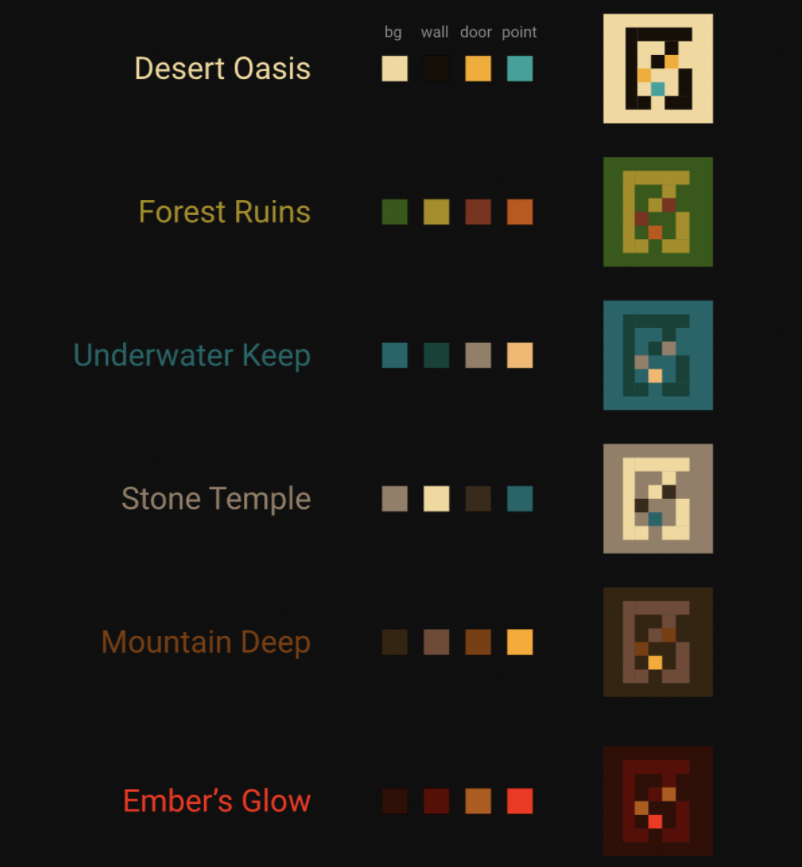
Anima "Spells"
The founding team of Anima, Observatorium, overlaps with Bibliotheca DAO, and there are many supports and interactions between the two projects. For example, if Realms holders stake their tokens, they will receive a 66% fee discount when minting Anima; the game architecture of Anima is deeply coupled with Realms, etc.
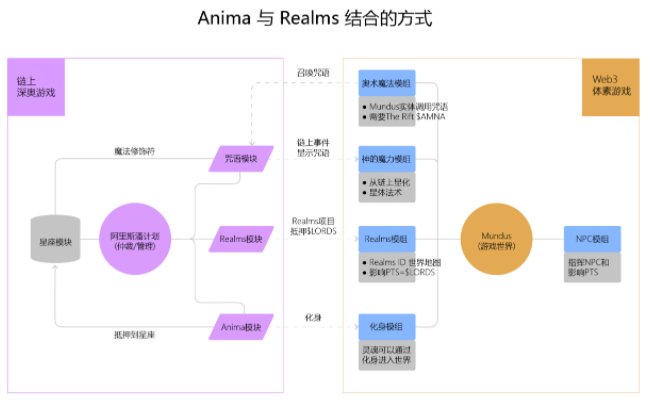
Image source: Anima official Discord, @kaka | 1982.eth
Gensis Adventure "Characters"
In the entire Lootverse, GA is considered a valuable and popular character. As a veteran project building the ecosystem alongside OG Loot, GA is almost used for the mint tokens and special access rights of all Lootverse projects, including Realms.
On March 11, an image display of Loot and Genesis Adventurers was added to Atlas. By entering the NFT serial number you own, you can directly drop to your location.
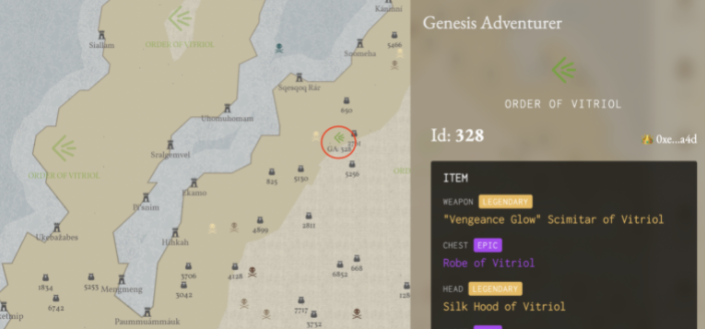
Ways to Participate in Realms
Stake Realms to earn $LORD.
Stake Realms to earn resources.
Liquidity mining.
To reward OGs, the project team launched the "Journey" event, where staking Realms will yield $LORD rewards and generate any of the 22 types of resources. Each resource is an ERC-1155 token that can be traded on the market. The entire Journey lasts for 15 cycles, with each cycle being 7 days. Only by staking for a complete cycle can you earn the rewards for that cycle. The rewards for the first 10 cycles are 625 $LORDS for each Realm staked for a complete cycle, while the rewards for the last 5 cycles are 350/312.5 $LORDS for each Realm staked for a complete cycle. The main differences are as follows:

Once staking begins, it is assumed that you will continue to stake in subsequent cycles. During the staking period, your Realms will not be displayed on Opensea and cannot be sold on Opensea.
$LORDS
The first phase of the liquidity pool activity runs from January 28, 2022, to March 28, 2022. During this period, 10,000 $LORDS will be allocated as rewards daily. As long as you provide liquidity within the specified range, you can receive incentives.
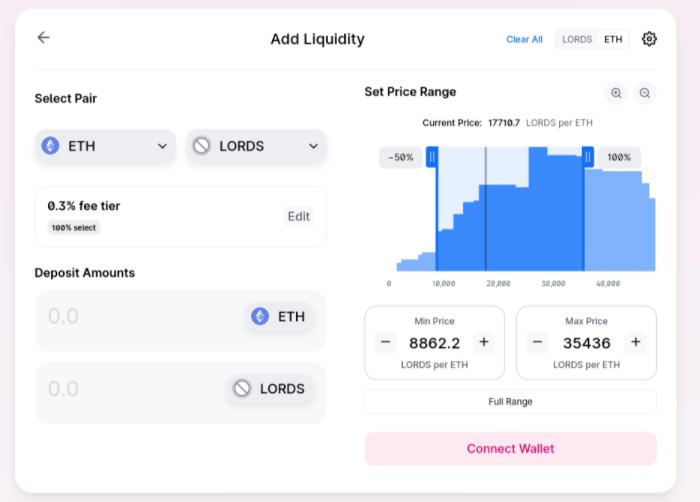
DAO Governance
From ICO to airdrop, Bibliotheca DAO believes that the best approach is still fair-launch. However, there is a problem: if there is no continuous output and updates at the product level, inflation issues will arise. From a protocol perspective, sustainable value delivery is needed. To solve this problem, more holders or users who can efficiently utilize the tokens will be required.
To keep the tokens circulating, Bibliotheca DAO has designed the following three points in the game:
- When tribes plunder resources from each other, a portion of the rewards obtained by the victorious side will be transferred to the DAO;
- The project team will develop an NFT trading market based on $LORDS, with 5% of the trading commission used for DAO construction;
- When attracting other developer teams to create new modules in Realms, $LORDS needs to have a value capture mechanism in that project.
In summary, Realms exploded last year alongside the Loot ecosystem. After establishing a community with this wave of enthusiasm, several founders led the creation of other projects, with a high degree of interconnection among the projects. Tokens, NFTs, and endogenous resources within the projects may have different value representations in other projects. In addition to these "family projects," the team is also actively collaborating externally, bringing OG Loot and GA into their ecosystem. Numerous characters have their own positioning within the entire ecosystem, forming a closely related and dynamically balanced on-chain world.







